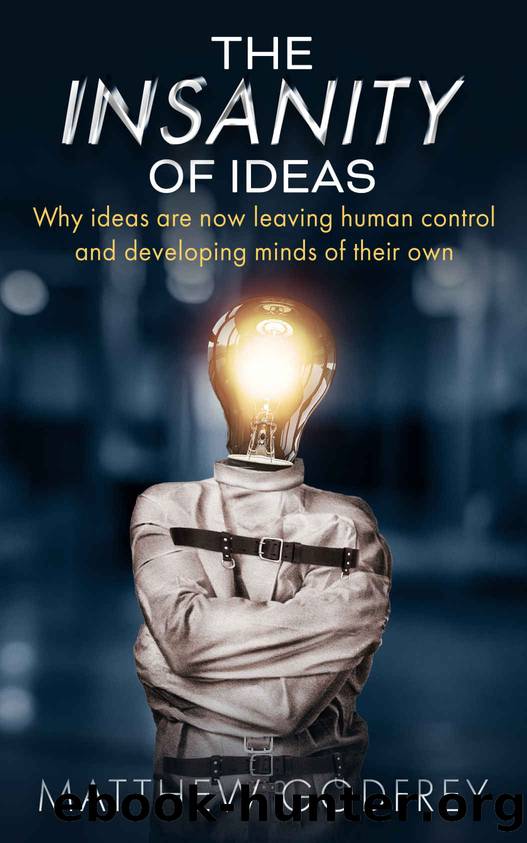E-BOOK by Godfrey Matthew

Author:Godfrey, Matthew
Language: eng
Format: epub
Publisher: Matthew Godfrey
Published: 2021-07-13T16:00:00+00:00
Chapter 9
The IDEA ILLUSION.
When it comes to ideas, research indicates that the majority of people will select information that reinforces their beliefs, rather than those that might challenge them. We often like to feel that we are right, even if we are potentially wrong, or even ignorant of the facts. In a meta-data analysis of almost 8,000 people and across 91 separate studies, the Universities of Florida and Illinois showed that when given the choice of reading content that supports an idea that they already think is true, or selecting content that contradicts it, and therefore risk dismantling their own beliefs, 67% of people will choose to reinforce their position and not prise open the very uncomfortable lid of change. They found that this was especially true for beliefs related to religious, political, and moral ideas.282
As a species, when it comes to ideas, we take comfort in staying firmly in our own lane. After all, many of these âlanesâ such as politics, religion, and morality are our cherished ideas which we have intellectually vetted and then internalised over many years as personal dogma. In many psychological experiments, this familiarity and connection to an idea is known as the âmere-exposureâ effect. This is widely credited to the 1960s social psychologist, Robert Zajonc283 but has also been shown in studies as far back as the 1870s. The research shows that people are inclined to develop a preference for ideas merely because they are familiar with them. That familiarity to an idea, breeds through direct interaction, when it is repeated to a person on a consistent and continual basis. There is complexity built within this model. The length of exposure, time between exposures, and what state the human mind is in during the exposure, all influence and alter potential outcomes.
Advertising and marketing have often operated on a sophisticated frequency model to take advantage of this instinctive and evolved human condition of accepting primacy ideas, but they do it at a colossal scale. Every day, everywhere on the planet, companies spend billions of dollars, creating trillions of messages, for new ideas that utilise data-driven, real-time analytics, to repeatedly feed consumers these messages designed to take advantage of the âmere-exposureâ effect. In fact, 98.5% of Facebookâs US$70 billion revenue in 2019 came from advertising revenue that arguably, digitally leverages this basic human psychological phenomena.284 A high proportion of a modern advertising platformâs revenue usually comes from the distribution of mundane, often trivial and intrusive ideas, such as a new set of steak knives, anti-dandruff shampoo, or a miraculous exercise machine, specially designed to enthusiastically rust under the bed in perpetual hibernation, post-purchase. Other content communicated on these massive online and offline platforms, will be dedicated to more vital and long-term ideas, critical for society to wrestle with and select outcomes. This can include ideas such as climate change, diversity, equal rights, or social change. In the 2020 US Presidential election, over US$6.8 billion was assembled to persuade voters whether to think left or right when considering ideas essential to the future of the nation.
Download
This site does not store any files on its server. We only index and link to content provided by other sites. Please contact the content providers to delete copyright contents if any and email us, we'll remove relevant links or contents immediately.
Fearfully and Wonderfully Made by Philip Yancey & Paul Brand(588)
Christian Ethics by Wilkens Steve;(574)
Numbers by Ronald B. Allen(504)
The World from 1450 To 1700 by Wills John E.;(501)
Christian Ethics: An Introduction to Biblical Moral Reasoning by Wayne Grudem(481)
How to Read Slowly by James W. Sire(463)
God and the Multiverse by Victor J. Stenger(449)
Morality by Jonathan Sacks(432)
Monastic Archaeology by Unknown(408)
The Disabled Church by Rebecca F. Spurrier;(398)
Jesus: A New Vision by Whitley Strieber(375)
Critical Writings by Joyce James;(368)
Death of the Doctor by Unknown(367)
Amish Grace by Donald B. Kraybill & Nolt Steven M. & Weaver-Zercher David L(366)
Redeeming Sociology by Vern S. Poythress(366)
The Technological System by Jacques Ellul(353)
Children of Lucifer; The Origins of Modern Religious Satanism by Ruben van Luijk(353)
The Catholic Case for Trump by Austin Ruse(335)
The Church in the Early Middle Ages by G.R. Evans(334)
